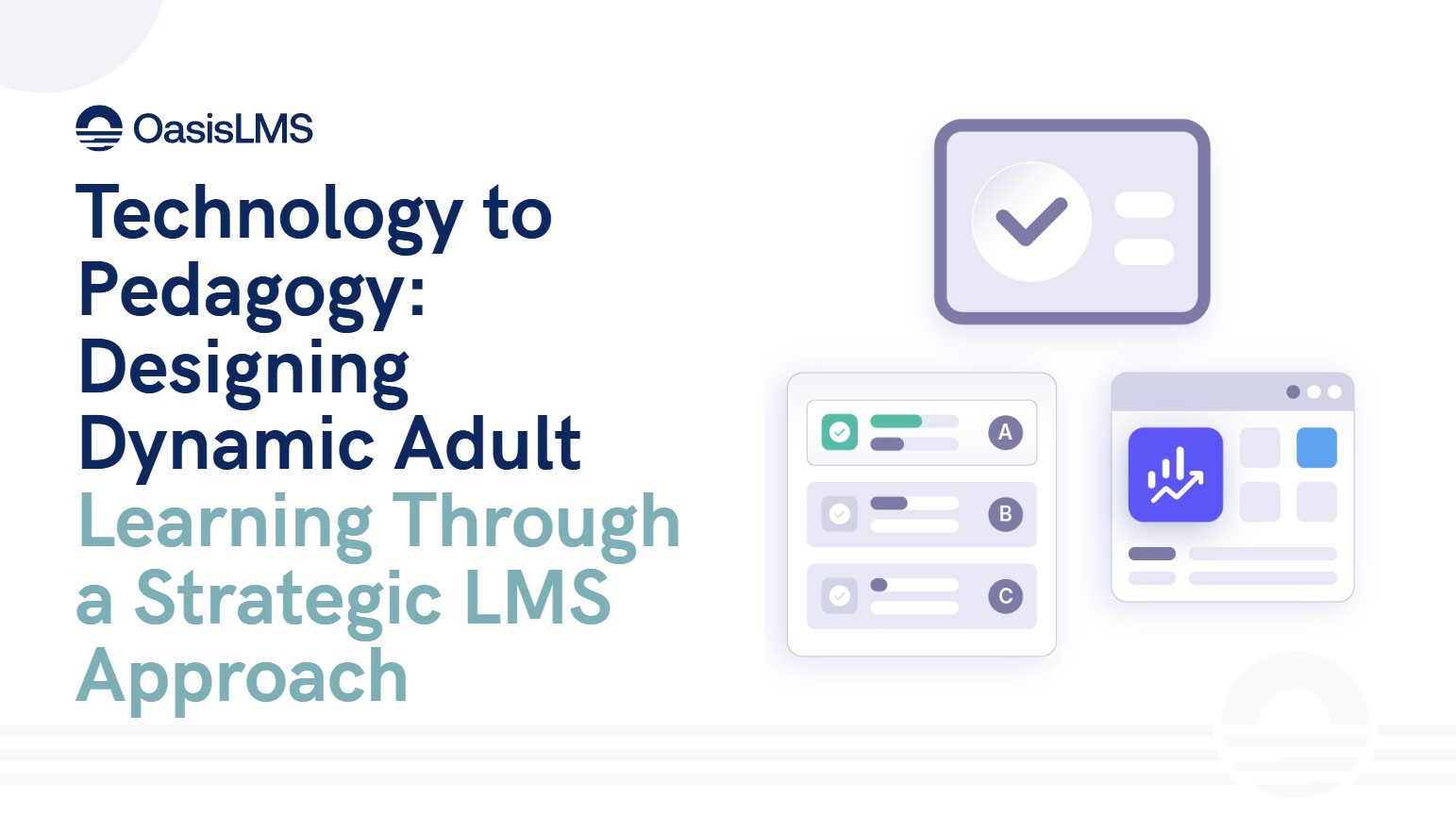
Association learning management systems (LMS) have evolved far beyond repositories of static content. Modern platforms now offer sophisticated tools that can transform continuing professional development (CPD) into dynamic, learner-centered experiences if used strategically. For adult learners, who bring professional experience, clear objectives, and a preference for relevant, practical learning, the LMS can be a powerful enabler of engagement, reflection, and application.
The following strategies illustrate how to optimize common LMS capabilities to design educational experiences that align with adult learning principles.
Adult learners value autonomy and flexibility. Many LMS platforms support modular course design, allowing content to be divided into discrete learning segments that can be navigated sequentially or non-linearly. This enables organizations to offer:
· Self-paced courses that integrate video, interactive components, readings, and embedded assessments.
· Optional pathways for advanced or specialized learners to explore topics in greater depth.
· Progress tracking and bookmarking, supporting learners who engage intermittently around clinical or professional responsibilities.
Modular design also supports differentiated pacing and personalized progression, essential for adult learners balancing competing professional demands.
Blended learning structures like combining asynchronous pre-work, synchronous live sessions, and post-activity assessments, are readily supported by LMS architectures. This approach allows educators to:
· Establish baseline knowledge through short pre-course modules.
· Reinforce learning and contextualize concepts during interactive live sessions.
· Assess knowledge or competence through structured post-course activities.
Integrating multiple modalities within one learning product leverages the strengths of each format while aligning with principles of reinforcement and spaced learning ,both critical for sustained knowledge retention.
Effective LMS platforms provide robust assessment engines that support both formative(learning-focused) and summative (evaluation-focused) strategies, including configurable options often include:
· Immediate or delayed feedback modes, allowing educators to match feedback timing to learning objectives.
· Item banks and randomized question pools for exam integrity.
· Confidence-level indicators to assess learners’ self-perceived competence.
· Peer comparison reports and diagnostic feedback that highlight strengths and gaps.
These tools can be strategically applied to encourage reflection, identify learning needs, and reinforce competence, all key elements of adult learning theory.
Adults learn effectively through interaction with peers and experts. Many LMS platforms now include discussion boards, Q&A forums, and integrations with real-time polling and audience interaction tools. When incorporated intentionally, these features support:
· Peer-to-peer knowledge exchange in asynchronous environments.
· Active participation during live sessions through polls and moderated Q&A.
· Faculty engagement that extends learning beyond the didactic component.
These elements foster a sense of community, deepen engagement, and reflect the collaborative nature of professional practice.
Personalization is increasingly central to adult learning experiences. Modern LMS platforms use behavioral data, performance metrics, and AI-driven recommendation engines to guide learners toward relevant or complementary content. Examples include:
· Suggesting advanced modules after successful completion of foundational content.
· Recommending targeted follow-up learning based on assessment performance.
· Highlighting new or trending content alignedwith individual interests or identified knowledge gaps.
Personalized pathways support self-directed learning and increase the perceived relevance of educational offerings.
Recognition mechanisms such as digital badging, tiered learning pathways, and leaderboards can sustain engagement, particularly in longitudinal programs or interprofessional environments. LMS features allow:
· Automated awarding of badges upon completion of specific milestones.
· Integration with professional networks to display achievements.
· Group-based leaderboards to foster friendly competition in team learning contexts.
Such strategies reinforce achievement, support intrinsic motivation, and promote continued participation.
Adult professionals frequently learn on the move. Responsive LMS interfaces and mobile applications with offline functionality enable learning to occur at the point of need, rather than being confined to traditional settings. Key design considerations include:
· Structuring microlearning segments suitable for mobile consumption.
· Enabling audio-based content for learners who prefer podcast-style experiences.
· Using push notifications to keep learners informed of deadlines and new opportunities.
· Accessibility and flexibility are central to sustaining engagement among busy adult learners.
Many adult learners in the health professions participate in CPD to meet licensure, certification, or maintenance of certification requirements. Leading LMS platforms streamline this process by offering:
· Configurable credit assignment for multiple learner roles and professions.
· Automated certificate generation and transcript management.
· Direct integration with accrediting body reporting systems, reducing administrative burden.
This alignment not only ensures compliance but also minimizes learner friction, allowing participants to focus on learning rather than administrative tasks.
LMS technology can powerfully enhance adult learning, but only if CPD professionals deliberately align platform features with sound educational strategies. Modular structures support autonomy, blended modalities reinforce learning, assessments deepen reflection, social tools foster community, personalization increases relevance, and recognition mechanisms sustain engagement. When combined with mobile access and integrated accreditation workflows, these elements create comprehensive, learner-centered ecosystems that reflect the realities of professional practice.
Technology is not the pedagogy, but when thoughtfully applied, it becomes a powerful ally in advancing meaningful continuing professional development.
Whether managing CME for physicians or supporting member growth, Oasis LMS helps deliver high-impact education efficiently and at scale.
